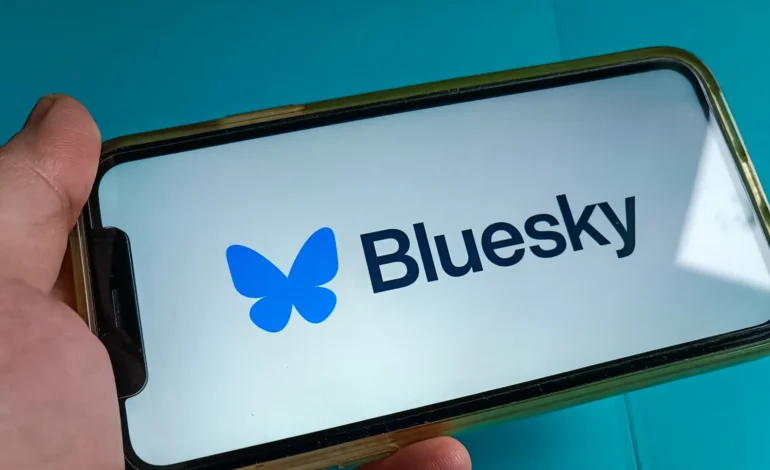
Bluesky Rolls Out Verified Badges: A New Era of Trust & Transparency
Introduction
In an era where misinformation spreads faster than truth, trust has become a luxury on social media. As users increasingly demand authenticity and accountability, Bluesky, the decentralized social media platform backed by former Twitter CEO Jack Dorsey, has introduced verified badges—marking a pivotal moment in the evolution of digital transparency.
Unlike traditional platforms that use centralized authority for verification, Bluesky is taking a unique, open approach that could redefine how we assess credibility online.
What Are Verified Badges on Bluesky?
Bluesky’s verified badges are blue checkmarks issued by approved organizations using the AT Protocol (Authenticated Transfer Protocol). These organizations are recognized third-party entities, not Bluesky itself, and they verify users based on set criteria. Once verified, a user’s profile displays a checkmark that links directly to the verifying entity.
This change comes at a time when users are tired of opaque algorithms and shifting rules. Instead of trusting a corporate entity to arbitrate truth, Bluesky’s model encourages community-backed validation.
Why Verification Matters Today
1. Combating Fake News and Bots
Bluesky’s badge system aims to eliminate one of the biggest plagues on social media: impersonation. Fake accounts are not just annoying—they’ve caused real-world harm, from scams to election misinformation.
By allowing third-party verification, Bluesky distributes the power to verify, reducing the risk of platform bias or political interference. It’s a move that many users see as long overdue.
2. Restoring User Confidence
After witnessing controversies around “paid verification” models on platforms like X (formerly Twitter), Bluesky users had concerns about elitism and misrepresentation. The new approach decentralizes trust-building and puts power back in the hands of communities.
3. Building Safer Digital Ecosystems
For brands, creators, journalists, and even activists, being verified now means more than just social proof. It signals accountability, increasing the safety of digital conversations for all users—especially young and vulnerable audiences.
How Does It Work?
To get verified, a user must be endorsed by a domain (organization or publisher) that is authorized to issue badges. This domain then appears in the user’s profile alongside a checkmark, creating a transparent, traceable chain of trust.
The verification is tied to Bluesky’s DNS-based identity system, which links a handle like @user.bsky.social to a website or domain. This cryptographic proof of authenticity removes ambiguity and makes it difficult for bad actors to replicate.
Human-Centered Impact of Verified Badges
Empowering Individuals
Bluesky’s system isn’t just about aesthetics—it’s about digital identity empowerment. With domain-based trust, creators and professionals can tie their content directly to their reputation. For instance, a university can verify its professors, a nonprofit can verify its activists, and a newsroom can authenticate its journalists.
Trusting the Source, Not Just the Platform
In legacy social media models, trust was given to a single entity (like Meta or Twitter). Bluesky’s approach allows trust to be distributed. Now, users are not just trusting a platform—they’re trusting the source behind each profile.
Reducing Centralized Censorship Concerns
Many users feel censored or silenced by centralized platforms. By letting independent organizations issue badges, Bluesky minimizes top-down control, offering a more democratic internet.
Challenges Ahead
1. Maintaining Badge Integrity
If verifying organizations aren’t carefully vetted, the badge’s value could be diluted. Bluesky will need strong community guidelines and active moderation to avoid “badge farming” or misuse.
2. Scaling Decentralized Trust
As Bluesky grows, maintaining a diverse ecosystem of reliable verifiers will be essential. Without careful expansion, the system could face regional bias or dominance by a few large players.
3. Educating the User Base
For most users, this system is new and may seem complex. Bluesky must invest in onboarding and education to ensure that users understand the value and authenticity of verified badges.
How It Compares to X, Threads, and Instagram
| Platform | Verification Model | Key Concern | Trust Factor |
|---|---|---|---|
| Bluesky | Decentralized via organizations | Potential verifier misuse | Community-driven |
| X (Twitter) | Paid badge / ID verification | Impersonation, confusion | Money-driven |
| Meta Verified + ID checks | Limited access, paywall | Platform-based | |
| Threads | Based on Instagram credentials | Lack of direct verification | Linked trust |
Bluesky leads the way in open verification protocols, offering a system that could be replicated across other decentralized platforms if successful.
What This Means for Brands and Professionals
If you’re a brand, thought leader, or content creator, this is a prime opportunity to build a loyal audience by:
- Applying for verification via your domain
- Associating your brand with credibility and transparency
- Gaining community trust in a decentralized space
Being an early adopter also signals innovation—setting you apart in a saturated digital world.
Conclusion: A Blueprint for a Transparent Social Future
Bluesky’s verified badge system is more than just a cosmetic upgrade—it’s a bold step toward building an internet rooted in human trust, not corporate dominance. In a world where our screens are flooded with noise, the ability to verify a voice from a community-approved source can restore clarity.
Whether you’re an educator, a creator, or just a curious user, this new feature helps you take control of your digital identity. It’s time to move beyond the era of algorithmic gatekeeping and embrace a future where trust is earned, not sold.






